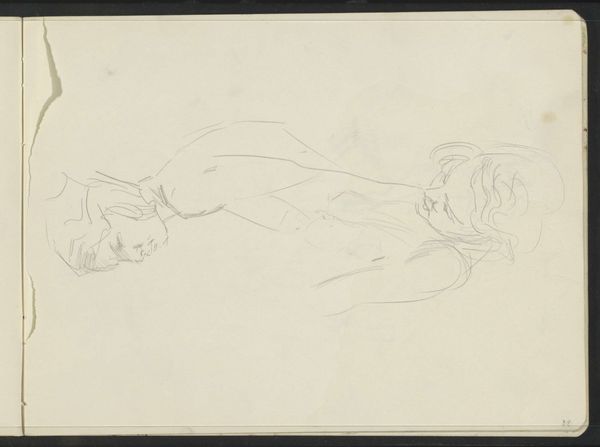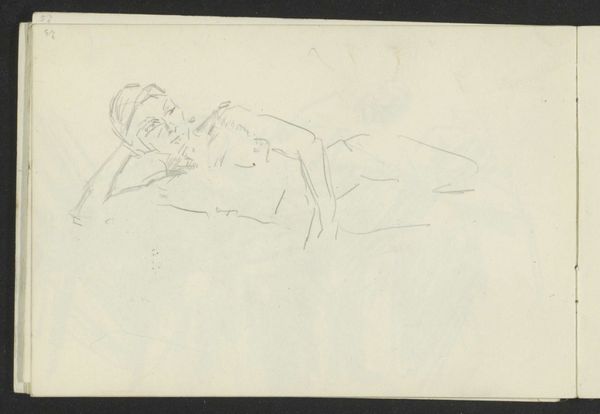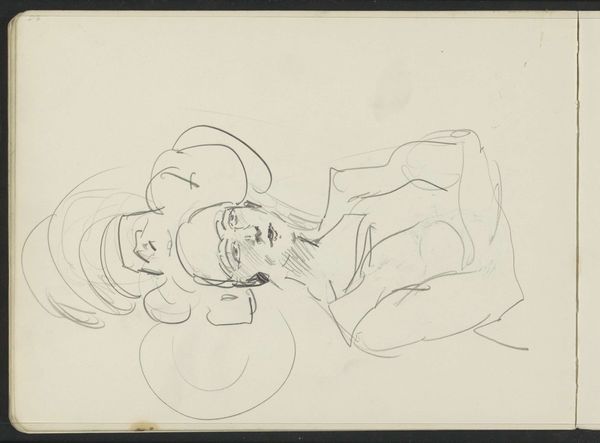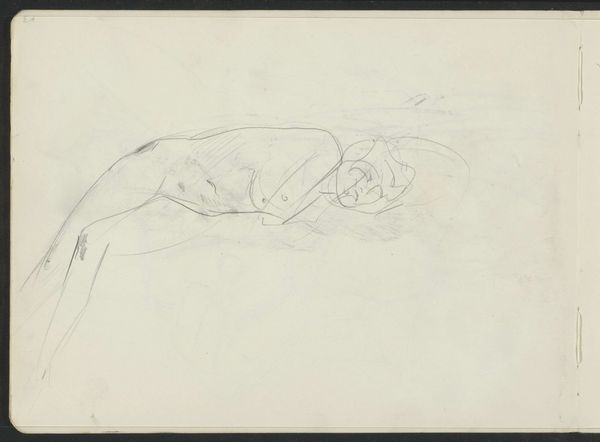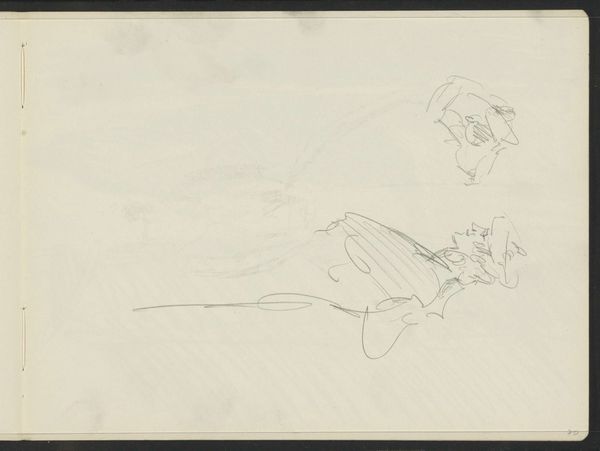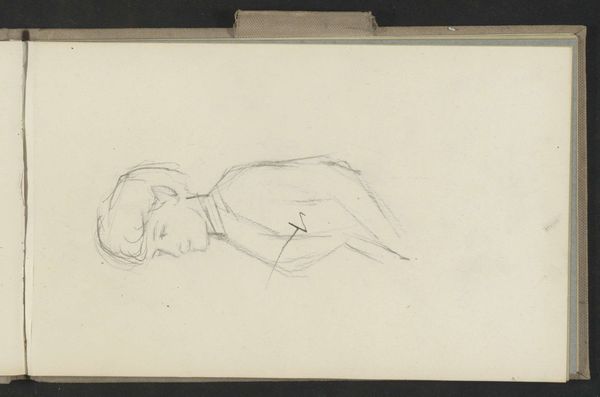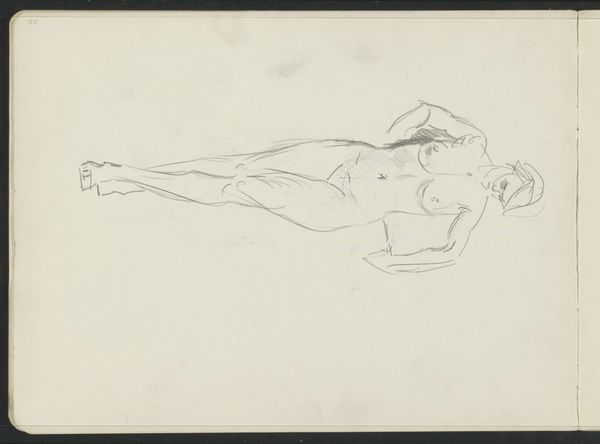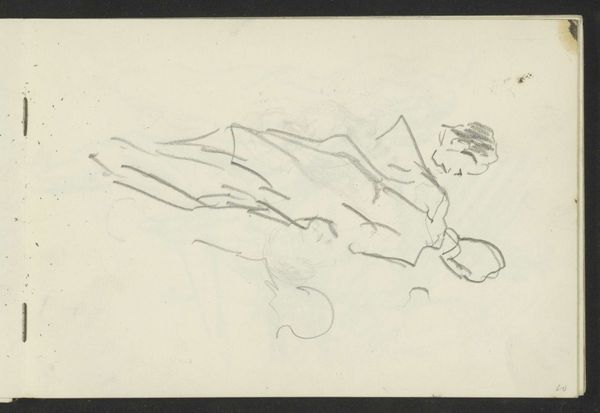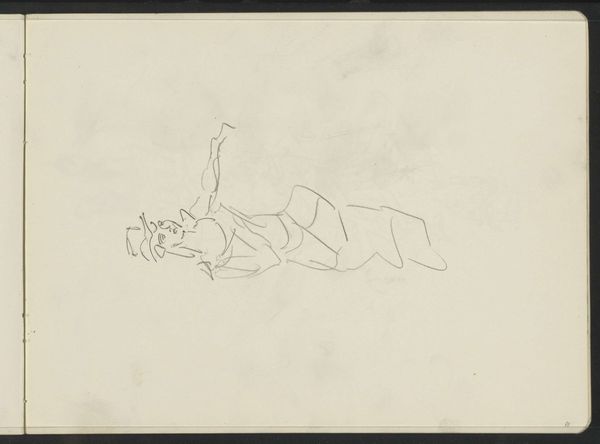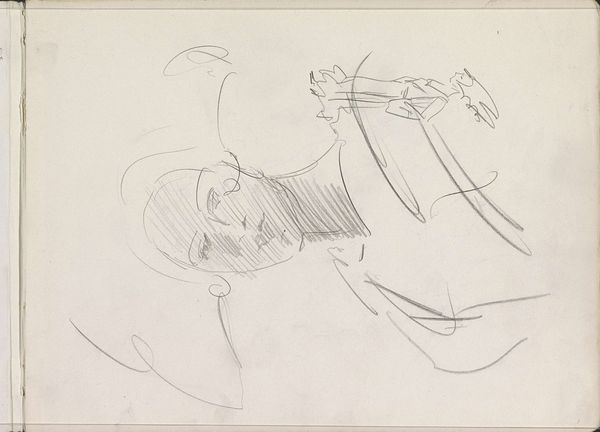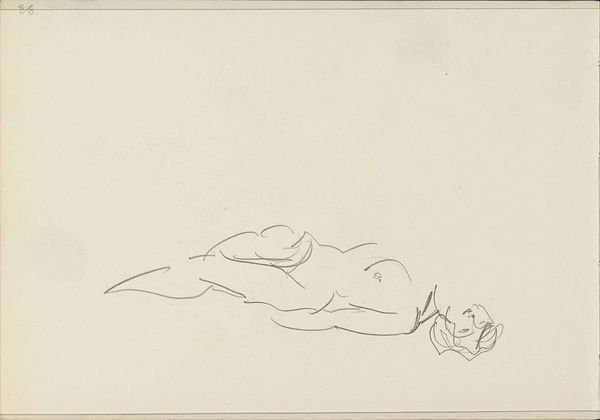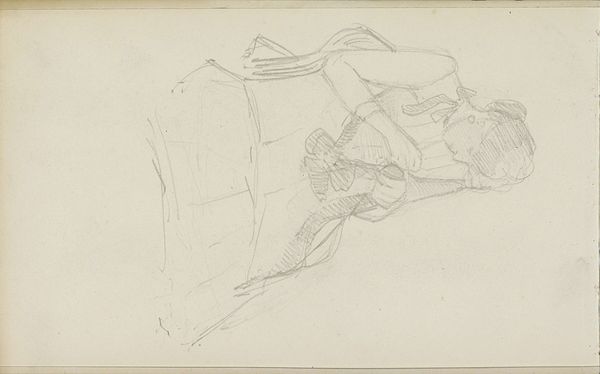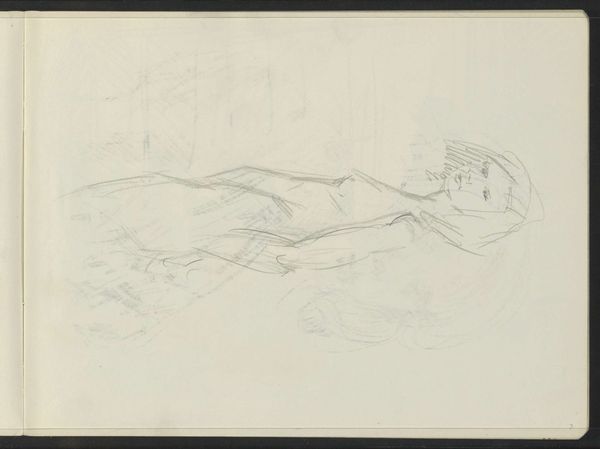
drawing, pencil
#
portrait
#
drawing
#
figuration
#
pencil
#
academic-art
#
nude
Copyright: Rijks Museum: Open Domain
Editor: We’re looking at "Seated Female Nude, Leaning on an Arm" by Isaac Israels, likely from the 1915 to 1925 period. It’s a pencil drawing at the Rijksmuseum. There’s something so vulnerable and intimate about it. What historical context might have influenced Israels in creating this? Curator: That intimacy is interesting, considering the era. Around this time, artists were challenging academic traditions and exploring modern life. Israels, known for his Impressionistic style and depictions of modern urban life, uses this classical subject – the nude – in a looser, more spontaneous manner. The pencil sketch format also makes me think of the rise of photojournalism. Are we looking at documentation or idealized imagery here? What statement might he be making about representation? Editor: So it's not just about the figure, but also about how it was captured and disseminated? Did societal attitudes toward the female form change during this period, and how did that shape the representation? Curator: Absolutely. With the increasing emancipation of women, the female nude became less about representing an ideal and more about portraying the reality of the female body. There's a social element to this shift. Do you notice any details in the composition that highlight this departure? For instance, her casual pose and direct gaze. Editor: Yes, her gaze almost challenges the viewer. And I guess, unlike highly polished academic nudes, the sketchiness brings the viewer closer to the artist’s process, stripping away the illusion a bit. It's less distant. Curator: Precisely. By presenting the body in this way, Israels subtly shifts the power dynamic between artist, model, and viewer, contributing to a larger discussion about female representation in a rapidly changing world. What do you make of that challenge to tradition? Editor: I think it makes the artwork more powerful when it’s examined from the point of view of it being less for simple ogling and more about existing within that reality and pushing against constraints and biases. Thank you for giving me a new way to appreciate this drawing! Curator: My pleasure. Understanding the social forces shaping art enriches our understanding of not just the art object but also the society that produced it.
Comments
No comments
Be the first to comment and join the conversation on the ultimate creative platform.
